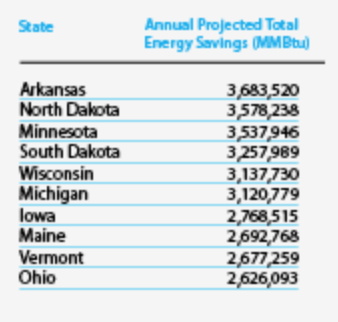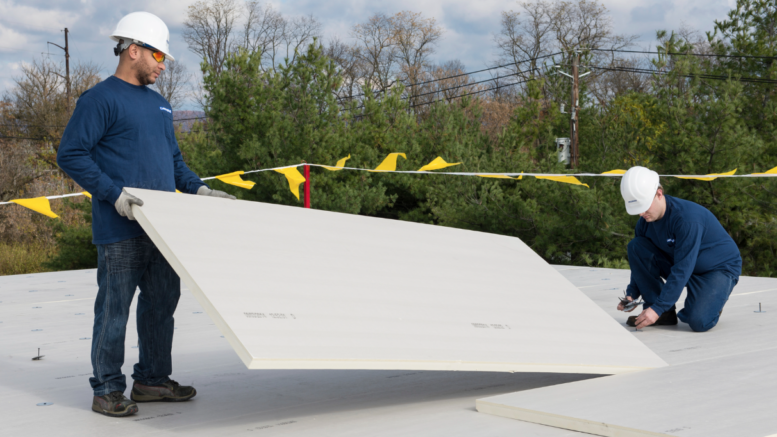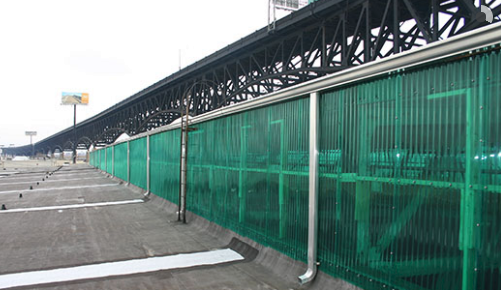As commitments to sustainability initiatives continue to gain momentum at the state and national level, there is a growing focus on improving the energy-efficiency performance of the built environment. After all, the existing building stock in the United States consumes approximately 40 percent of the total energy use and produces roughly 30 percent of total greenhouse gas emissions. Faced with the challenge of reducing these significant impacts, the building industry is asking: How much energy and associated greenhouse gas emissions can we save with today’s technology?
To help answer this question, a coalition of insulation trade associations commissioned a third-party facilitated study that quantified the lifetime energy savings and carbon emission reductions that could accrue by completing simple, cost-effective insulation retrofit projects in homes, commercial buildings and industrial facilities. The total savings figures released by ICF, an international consulting firm with expertise in the energy and efficiency sectors, are impressive. For example, the impact of investing in the studied insulation retrofit projects is equivalent to increasing current wind production by 135 percent or offsetting the emissions associated with 40 percent of all natural gas fired generation in the United States.
Energy Savings With Insulation Retrofits
The study was completed in three sections to assess the energy and emissions impacts from insulation improvementstoresidential, commercial and industrial buildings. Most applicable to the roofing industry, the commercial building study looked at the impact of code-compliant roof upgrades (at time of a roof replacement) and pipe insulation upgrades. The buildings analyzed in the commercial report represent both public and private structures, and include the following building types: primary and secondary schools, stand-alone retail, small and medium office buildings, and mid-rise apartments (based on U.S. Department of Energy (DOE) prototype buildings). The latest Commercial Buildings Energy Consumption Survey from the U.S. Energy Information Administration (EIA) reports that together, these buildings account for approximately 25 percent of existing building floor space in the United States.
The total energy savings of the studied insulation retrofits (looking at both roof replacement and pipe insulation upgrades) are summarized in the table below. These numbers summarize energy savings across all climate zones and scenarios.

For each commercial building type, the roof replacement was responsible for most of the potential energy savings due to the relative size of the project. For example, the Polyisocyanurate Insulation Manufacturers Association (PIMA) published a summary of the study findings, which shows that over a 30-year period, upgrading roof insulation on existing commercial buildings can save building owners more than $65 billion dollars in energy costs. Similarly, it could also eliminate nearly 338 million metric tons of carbon emissions, which is equivalent to 2.4 million gas-powered cars annually.
That said, projects across all states and for all modeled building types (save the medium office building type) that combine roof and pipe insulation measures are cost-effective, with cumulative energy cost savings greater than the project capital investment costs. The benefit-cost ratio (BCR) for the combined roof and pipe insulation measures averaged 1.42 across all building types and scenarios, indicating the measures’ life-cycle benefits exceed their costs. Generally, savings are greater in colder climates or those locations where buildings are heated more frequently than cooled. Illustrating this trend, the table below names the top 10 states with the highest predicted annual total energy savings (annual electric savings plus annual natural gas savings) of the studied insulation retrofits.

Furthermore, savings are greater for building types that have both larger total floor areas and a higher roof-to-floor area ratio. Primary and secondary school buildings are a strong example of this trend. As a result of the building configuration (one- or two-story), large total floor space and occupancy assumptions, school buildings can significantly reduce energy loads by completing the studied insulation improvements. The average whole-building annual energy savings is 8.7 percent for primary schools and 7.1 percent for secondary schools, with higher savings rates available to schools located in colder climates.
Addressing Existing Building Performance
Historically, the federal government and state and local municipalities have relied on voluntary actions to achieve better energy performance and reduced emissions in existing buildings. But the growing focus on the nation’s decarbonization goals, combined with the fact that the U.S. building stock consumes approximately 40 percent of the total energy use and produces roughly 30 percent of total greenhouse gas emissions, has challenged policymakers to take timely action.
Recent legislation passed by Congress, including the Infrastructure Investment and Jobs Act of 2021 and the Inflation Reduction Act of 2022, make substantial investments in upgrading the performance of buildings through projects that include insulation retrofits. Under this legislation, the DOE will offer various funding programs to support the needed policy implementation and building retrofit efforts, including a $500 million grant program for schools that encourages applicants to focus on high-impact projects like building envelope retrofits (roof replacements being the most common envelope retrofits for existing commercial buildings). Billions of dollars in funding have also been allocated to state and local jurisdictions for the adoption of modern building energy codes and the development of policies that target opportunities to reduce energy use in existing buildings. One such policy tool, building performance standards, requires underperforming buildings to make improvements that meet specific performance targets over time.
The commercial building portion of the report released by ICF is one more tool that underlines the importance of addressing existing buildings as part of energy and climate policy. Its findings help raise the profile of building envelope improvements, like roof replacements, with policymakers that will shape and implement relevant funding programs.
Key Considerations
Across the United States, roof replacements on commercial buildings will become a valuable compliance option as stringent building performance standards and other new policies are adopted to achieve the aggressive energy savings and emissions reductions that are now necessary. For the roofing professional, the commercial building insulation study helps quantify the macro benefits of roof replacements, making the case that insulation upgrades are a cost-effective way for building owners to reduce their carbon footprint. In doing so, they can quickly and reliably meet corporate carbon reduction goals and building performance standards. While improving existing buildings can be a challenge, building and roofing industry professionals are well equipped and positioned to play critical roles in decarbonizing the built environment. To learn more about the opportunities and benefits of energy-efficient roof replacement projects, visit www.polyiso.org/page/InsulationSavingsExistingBuildings.
About the Author:
Justin Koscher is the president of the Polyisocyanurate Insulation Manufacturers Association (PIMA). For more information, visit polyiso.org.





Be the first to comment on "Quantifying the Impacts of Energy-Efficient Roof Replacements"